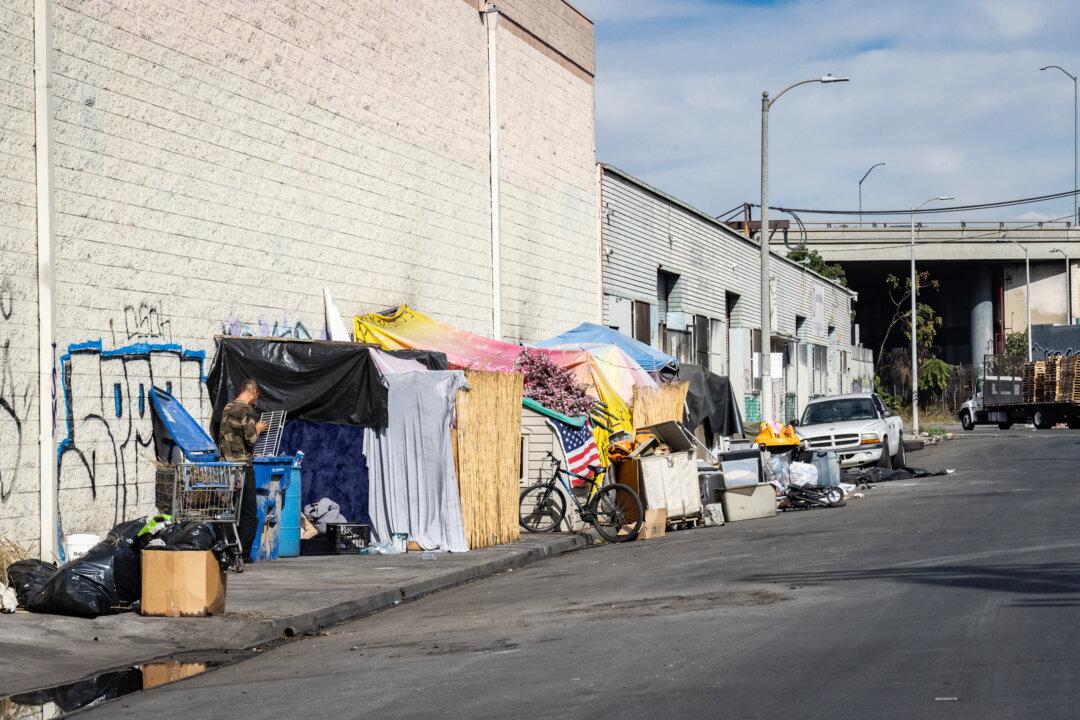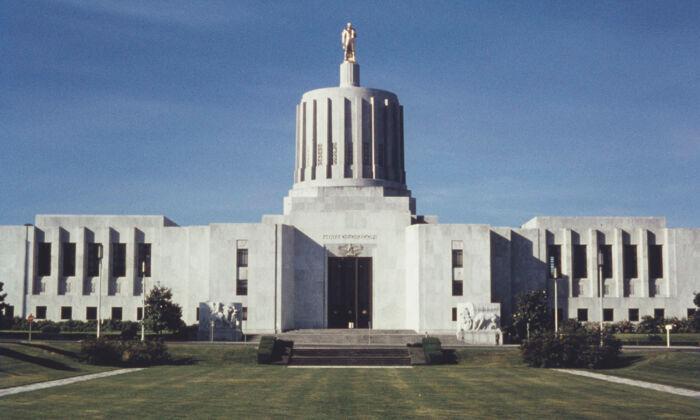California and Oregon continue to lead the nation in homelessness, according to the Annual Homeless Assessment Report (AHAR) released on Dec 15 by the U.S. Department of Housing and Urban Development (HUD).
California had the highest rate of people experiencing homelessness who were “unsheltered”—living in places not meant for human habitation, such as outdoors in tents, cars, or other makeshift shelters, as opposed to indoor shelters or temporary accommodations.
Second only to the Golden State, Oregon stands out as the state with the largest number of unsheltered and homeless youth and families according to the HUD’s latest “Point-in-Time” (PIT) count estimates for a single night in January of this year.
Across the country, the report found that 653,100 people—approximately 20 residents out of every 10,000—were experiencing homelessness on a single day.
This is the highest recorded number since the department began its yearly PIT count in 2007 and an increase of 12 percent between 2022 and 2023, officials said.
Six in 10 of the homeless nationwide were sheltered—meaning they were in an emergency shelter, transitional housing, or a haven program—while four in 10 were unsheltered.
“The rise reflects a perfect storm of economic instability in the wake of COVID, a relentlessly unaffordable housing market, and the sunsetting of programs that really provided concrete support for people,” said Meghan Henry, AHAR project director.
California Leads the Surge
The most populous state in the nation, California had 181,399 people experiencing homelessness, according to the PIT count. Of those, 123,423 people (68 percent) were unsheltered.With just under 39 million people, California has a greater share of its homeless population living outdoors than any other state and accounts for 49 percent of all people living on the streets in the United States.
The five major metro areas with the highest rates of unsheltered people were all in California: the San Jose region (with 75 percent of its homeless population living on the streets), Los Angeles (73 percent), and Oakland, Long Beach, and Sacramento (72 percent).
The two suburban regions with the nation’s highest unsheltered rates were El Dorado County in northern California with 89 percent and Imperial County along the Mexican border with 88 percent.
The state also reported the largest number of unaccompanied youth, those under the age of 25, at 10,173.
Of those, nearly 7,000 were living on the streets, making up roughly half of all youth in the nation who are unsheltered.
California is also home to the three U.S. cities with the greatest youth homeless population—San Jose, with 86 percent of unaccompanied youth living on the street, San Francisco with 81 percent, and Oakland with 77 percent.
In two suburban California areas, nearly all unaccompanied youth were on the streets and not in shelters in two suburban California areas—99 percent in the Santa Cruz region and 96 percent in Marin County.
A total of 53,169 people were living unsheltered and classified as “chronically” unhoused, which HUD defines as an “individual with a disability who has experienced homelessness for more than a year, or who has had four or more homelessness episodes in the past three years that add up to 12 months.”
Oregon Is First in Family Homelessness
In Oregon, researchers estimated there were 20,142 people experiencing homelessness during the count, with 13,004 of them, or 64.6 percent unsheltered. This includes 3,900 people with families, making Oregon the leading state for families experiencing homelessness.“Oregon’s urban areas, while reporting increased shelter capacity in 2023, had even more families in need of shelter because of the shortage of affordable housing,” the HUD report said.
The Beaver State also has one of the highest per capita rates of homelessness, affecting 48 out of every 10,0000 residents.
Overall, homelessness increased by more than 12 percent (from 17,959 to 20,142) from 2022 to 2023. The state experienced one of the nation’s largest Covid-related spikes, with homelessness up by 22.5 percent since the start of the pandemic.
Oregon also topped all states with the biggest increase in homelessness since 2007, and those with significant increases in unaccompanied youth experiencing homelessness.
Democrat Gov. Tina Kotek cites a lack of affordable housing and pandemic-era social distancing measures for decreased capacity at shelters in the state.
“We had a challenge before the pandemic started, and it just exacerbated it,” she stated. “If you were homeless in 2019, as you had just ended up being on the streets, and then you were told ‘okay, just wait for three years and live in your tent,’” that level of chronic homelessness is hard to recover from.
“We have created a difficult situation for people here because of the pandemic and it’s going to take some time to build out of that.”
Upon taking office in January, Ms. Kotek declared a homelessness state of emergency for parts of the state where homelessness has increased by 50 percent or more since 2017.
She proposed to spend about $32.1 billion over the next two years to battle the problem.







